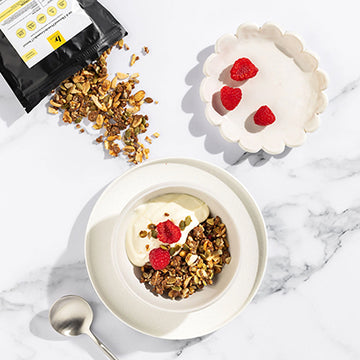Introduction: Why Weight Loss Is Different After 50
Reaching your fifties is a milestone that brings freedom, confidence and often a renewed focus on health. Yet many women notice that despite eating sensibly and exercising regularly the scales seem less forgiving. This is not a moral failing or a lack of willpower. Menopause and its lead‑up involve significant hormonal shifts: oestrogen and progesterone levels drop, testosterone fluctuates, insulin sensitivity declines and stress hormones may rise menopause.org.au. These changes alter where fat is stored, how energy is burned and what foods you crave. A natural age‑related slowdown in metabolism and loss of lean muscle amplify the challenge.
Weight management after 50 is not simply about eating less and moving more. It requires understanding how hormones influence metabolism, adopting smart nutrition strategies, choosing appropriate exercises, cultivating restorative sleep and managing stress. This comprehensive guide explains how hormonal changes affect body composition, why weight gain happens during and after menopause and offers actionable advice. It includes dietitian‑approved nutrition plans, exercise programmes tailored for over‑50s, lifestyle modifications, medical options and real‑life success stories. An expert Q&A section answers common concerns. Information is grounded in authoritative sources such as the Australasian Menopause Society and national dietary guidelines menopause.org.au. Our goal is to empower you to take control of your health in this new life stage.
Understanding Hormonal Changes After 50
The Menopausal Transition
Menopause is officially diagnosed when a woman has gone 12 consecutive months without menstruation. The years leading up to it, called perimenopause, are characterised by unpredictable fluctuations in oestrogen and progesterone. Periods become irregular, and symptoms such as hot flushes, night sweats and mood changes may appear. Once post‑menopausal, the ovaries stop producing oestrogen and progesterone, and the body relies on other tissues, such as fat and adrenal glands, for small amounts of hormones.
Hormones and Metabolism
Declining oestrogen shifts fat deposition from hips and thighs to the abdomen and reduces lean mass menopause.org.au. Oestrogen also influences appetite hormones like leptin and ghrelin, so lower levels can increase cravings for sweets and refined carbohydrates. Less testosterone contributes to age‑related muscle loss, lowering basal metabolic rate. Insulin sensitivity decreases, encouraging fat storage, and chronically high stress elevates cortisol, which promotes abdominal fat accumulation and muscle breakdown. These drivers help explain why standard dieting approaches may be less effective after 50.
Natural vs Induced Menopause
Natural menopause occurs when the ovarian follicles are depleted and hormone production ceases gradually. Induced menopause happens when surgery or medical treatments, such as chemotherapy or the removal of ovaries, abruptly stop hormone production. Women experiencing induced menopause may have more intense symptoms and sudden metabolic changes, making tailored support from healthcare professionals integral.
Why Weight Gain Happens After Menopause
Metabolic Slowdown and Muscle Loss
Resting metabolic rate declines with age as muscle mass decreases. Women between ages 45 and 55 gain roughly half a kilogram per year and about 2.3 kilograms during the menopausal transition menopause.org.au. Muscle mass decreases by 3–8 per cent per decade, and less muscle means fewer kilojoules burned at rest. Without adjusting energy intake or increasing physical activity, excess energy is stored as fat.
Visceral Fat and Lifestyle Factors
Declining oestrogen encourages visceral fat deposition around the organs menopause.org.au. This “active” fat releases inflammatory chemicals that increase the risk of cardiovascular disease, diabetes and some cancers. Sleep disruptions, caring for ageing parents, work demands and increased alcohol intake can exacerbate weight gain. Chronic stress raises cortisol levels, stimulates appetite, and disrupts sleep; alcohol provides empty kilojoules and interferes with hormone regulation. Recognising these factors enables targeted interventions beyond simply counting calories.
Nutrition Strategies – Dietitian Tips
Achieving a healthy weight after 50 requires a balanced approach rather than a drastic diet. For women who are overweight or obese, the Australian Obesity Guidelines recommend creating an energy deficit of about 2,500 kilojoules per day menopause.org.au. Restrictive diets that cut out food groups may slow metabolism and be hard to sustain, so focus on nutrient‑dense foods, adequate protein and fibre, hydration and mindful eating.
Mediterranean‑Style Eating and Portion Control
The Mediterranean diet emphasises vegetables, fruits, whole grains, legumes, nuts, seeds, olive oil and lean proteins like fish and chicken. It is rich in fibre and healthy fats, supports heart health and stabilises blood sugar. Portion control remains integral: use smaller plates, measure serving sizes and eat slowly to recognise fullness. Avoid mindless eating in front of screens. Swap refined grains for whole grains, choose unprocessed snacks and include colourful vegetables at each meal. The diversity of plant foods provides antioxidants that combat inflammation and support hormonal balance.
Protein and Fibre for Satiety
Protein preserves lean muscle and regulates appetite. Aim for 1.0–1.2 grams of protein per kilogram of body weight per day from sources like fish, eggs, chicken, legumes, tofu and dairy. Distribute protein evenly across meals to support muscle synthesis. Fibre increases satiety and supports digestive health. Include a variety of vegetables, fruits, whole grains, nuts and seeds to achieve 25–30 grams of fibre daily. Pair complex carbohydrates with protein or healthy fats to slow digestion and maintain steady blood sugar.
Hydration and Alcohol Moderation
Drink around 2 litres of water daily, adjusting for climate and activity levels. Adequate hydration can help differentiate between thirst and hunger. Enjoy unsweetened herbal teas or infused water for variety. Limit alcohol to no more than one standard drink per day and include alcohol‑free days. Alcohol adds empty kilojoules, disrupts sleep and interferes with hormone regulation.
Supplements and Nutrient Gaps
Post‑menopausal women should aim for 1,000–1,300 mg of calcium per day menopause.org.au to support bone health. Dietary sources include dairy products, fortified plant milks, almonds, tofu set with calcium, sardines and leafy greens. Vitamin D is necessary for calcium absorption; many women in Australia and New Zealand may be vitamin D deficient due to limited sun exposure and should consider a supplementmenopause.org.au. Iron requirements drop after menopause but remain important if heavy periods persist. Omega‑3 fatty acids from fish, flaxseeds or supplements support heart health; B‑vitamins aid energy metabolism. Always consult a healthcare provider before starting supplements, as excessive intake can be harmful.
Mindful Eating and Emotional Awareness
Hormonal fluctuations can trigger cravings and emotional eating. Practise mindful eating by paying attention to hunger and fullness cues, eating slowly and savouring each bite. Identify non‑food coping strategies for stress, such as taking a walk, calling a friend or practising breathing exercises. Keeping a food and mood journal can help recognise patterns and make adjustments.
Sample Daily Meal Plan
A sample day that balances protein, healthy fats and fibre might look like this:
● Breakfast: Greek yoghurt with berries, chia seeds and crushed almonds.
● Snack: An apple with natural peanut butter.
● Lunch: Grilled salmon on quinoa with mixed greens, roasted vegetables and a drizzle of olive oil.
● Snack: Carrot sticks with hummus.
● Dinner: Stir‑fried tofu with broccoli, capsicum and snow peas served over brown rice.
● Dessert: Dark chocolate (two squares) and herbal tea.
This plan provides sustained energy, supports muscle maintenance and offers essential vitamins and minerals. Adjust portion sizes and ingredients based on personal preferences and energy needs.
Exercise Plans Tailored for Over‑50s
Physical activity is recommended for adults of all ages, including women during and after the menopausal transition menopause.org.au. Exercise preserves muscle, boosts metabolism, strengthens bones, improves mood and reduces the risk of chronic diseases. Aim for at least 150 minutes of moderate‑intensity activity or 75 minutes of vigorous activity each week menopause.org.au. A combination of aerobic exercise, strength training and flexibility work yields the best results.
Aerobic Exercise
Choose activities you enjoy: brisk walking, cycling, swimming, dancing, water aerobics or hiking. Aim for 30 minutes most days. Break sessions into shorter bouts (e.g., three 10‑minute walks) if time is limited. Aerobic exercise improves cardiovascular fitness, lowers blood pressure and helps manage weight.
Strength Training
Resistance training maintains and builds muscle mass, which is integral for a healthy metabolism. Use resistance bands, free weights, weight machines or bodyweight exercises such as squats, lunges, wall push‑ups and chair dips. Perform strength training two to three times per week. Start with a weight that allows you to complete 8–12 repetitions with proper form, and gradually progress. Strength training also supports bone health by stimulating new bone growth and reducing the risk of osteoporosis menopause.org.au.
Flexibility and Balance
Practices like yoga, Pilates and tai chi improve range of motion, posture and balance, reducing the risk of falls. Gentle stretching after workouts helps maintain flexibility and aids recovery. Balance exercises (e.g., standing on one leg, heel‑to‑toe walking) can be incorporated into daily routines.
Sample Weekly Schedule
Here is a sample week for a beginner:
● Monday: Brisk walk for 30 minutes; upper‑body strength training (free weights or resistance bands).
● Tuesday: Yoga or Pilates session focusing on flexibility and core strength.
● Wednesday: Cycling or swimming for 30 minutes; lower‑body strength training (squats, lunges, leg press).
● Thursday: Rest day or gentle stretching.
● Friday: Water aerobics or dance class for 45 minutes.
● Saturday: Long hike or nature walk; short balance exercises.
● Sunday: Rest day with light stretching or restorative yoga.
Modify intensity and duration to suit your fitness level and any medical conditions. If you are new to exercise or have joint issues, consult a physiotherapist or exercise physiologist for personalised guidance.
Lifestyle Factors – Sleep, Stress and Mindset
Sleep
Quality sleep regulates appetite hormones and supports weight loss. Aim for seven to nine hours per night. Maintain a consistent sleep schedule by going to bed and waking up at the same time each day. Create a cool, dark and quiet sleep environment, limit caffeine and screen exposure in the evening, and practise relaxation techniques such as deep breathing or gentle stretching. Night sweats can disrupt sleep; breathable bedding and discussing hormone therapy with your doctor may help.
Stress Management
Chronic stress elevates cortisol, which signals the body to store fat and break down muscle. Stress also leads to emotional eating and sleep disruption. Manage stress through mindfulness meditation, regular physical activity and social connection. Prioritise tasks, set boundaries and practise saying no. Take short breaks during the day to breathe deeply or go for a walk. Consider talking to a counsellor or therapist if stress feels overwhelming.
Positive Mindset and Social Support
Focus on health improvements beyond the scale. Celebrate non‑scale victories such as increased stamina, improved mood or better sleep. Practise self‑compassion and avoid comparing yourself to younger versions of yourself or others. Surround yourself with supportive people who encourage your goals. Journaling progress and gratitude can reinforce motivation. Joining community groups, online forums or exercise classes can provide accountability and a sense of belonging.
Hormone Therapy and Medical Options
Menopausal Hormone Therapy
Menopausal hormone therapy (MHT) is primarily prescribed to relieve troublesome symptoms such as hot flushes, night sweats and vaginal dryness. The Australasian Menopause Society notes that MHT does not cause weight gain and may reduce the accumulation of visceral fat after menopause menopause.org.au. MHT should not be regarded as a weight‑loss treatment; rather, it helps you feel well enough to engage in healthy behaviours. Whether MHT is appropriate depends on age, time since menopause and individual risk factors (e.g., history of breast cancer or clotting disorders). Discuss benefits and risks with a qualified healthcare professional. When used, the lowest effective dose for the shortest duration is typically recommended.
Other Medical Approaches
Selective oestrogen receptor modulators (SERMs) and tibolone can relieve menopausal symptoms and maintain bone density but have little effect on body weight. GLP‑1 receptor agonists (e.g., semaglutide) are medications initially developed for diabetes that can promote satiety and weight loss; they may be prescribed for obesity management but carry side effects and must be supervised by a physician. Orlistat reduces fat absorption but may cause gastrointestinal side effects. Phentermine and similar appetite suppressants are used short term under strict medical supervision.
For women with severe obesity or obesity‑related complications, bariatric surgery is an option. Procedures like gastric sleeve or gastric bypass significantly reduce stomach size, leading to substantial weight loss. Surgery comes with risks, requires lifelong vitamin supplementation and demands major lifestyle changes, so it is reserved for those who have not achieved results through lifestyle modifications.
Always seek advice from a general practitioner or endocrinologist before starting medical treatments. Lifestyle interventions remain the foundation of weight management.
Real Stories and Testimonials
Real stories illustrate that sustained weight loss is achievable after 50 with a holistic approach. The names here are pseudonyms to respect privacy.
Julie’s Journey
Julie, 55, struggled with weight gain during perimenopause. She adopted a Mediterranean‑style diet, joined a walking group and added two weekly strength‑training sessions. She focused on health rather than dieting and lost six kilograms in six months while gaining energy. Julie credits her success to supportive friends and tracking her meals with be Fit Food and mood.
Carmen’s Success
Carmen, 62, experienced induced menopause after surgery. Persistent hot flushes affected her sleep and mood. With her doctor’s guidance, she started hormone therapy, which relieved symptoms and allowed her to exercise more consistently. She combined swimming, cycling and Pilates with portion control via Be Fit Food and lost eight kilograms in a year, trimming 10 centimetres from her waist. Carmen notes that small, sustainable changes were vital.
Priya’s Transformation
Priya, 49, noticed weight creeping up as she approached menopause. She learned to pair carbohydrates with protein, increased her fibre intake and prioritised sleep and meditation. Over nine months she lost four kilograms, improved her cholesterol levels and maintained her weight through stressful work periods. Priya emphasises the importance of listening to your body and being patient.
Felicity’s Experience
Felicity, 58, had long ignored weight gain because of caregiving responsibilities. She started gentle yoga and short walks, then progressed to resistance training. She gradually reduced alcohol intake and used mindful eating to avoid snacking late at night. Over a year she lost five kilograms and rediscovered her love for dance. Felicity’s advice: “Find physical activities that bring you joy, not punishment.”
Summary of Testimonials
These stories demonstrate that personalised plans, professional guidance and patience lead to sustainable results. Each woman tailored her nutrition, exercise and mindset to suit her lifestyle. All used Be Fit Food through the journey. They remind us that progress is not linear and that non‑scale benefits, such as better mood and improved sleep, are equally important.
Expert Q&A – Frequently Asked Questions
1. Why do women over 50 gain weight around the stomach?
Declining oestrogen redistributes fat to the abdomen, muscle loss lowers metabolism and insulin resistance increases. Stress‑related cortisol can worsen this pattern. Strength training, balanced nutrition and stress management help counter it. Prioritising sleep and limiting alcohol further support abdominal fat loss.
2. How can I speed up my metabolism after menopause?
Build muscle through regular resistance training, consume adequate protein, include interval training in your aerobic workouts and ensure thyroid health. Stay hydrated and prioritise quality sleep. Supplements marketed as “metabolism boosters” offer minimal benefit compared with these lifestyle changes.
3. Are calcium and vitamin D supplements necessary?
Women need 1,000–1,300 mg of calcium and sufficient vitamin Dmenopause.org.au. If your diet includes dairy or fortified alternatives, leafy greens and calcium‑set tofu, you may meet requirements without supplements. Because many Australian and New Zealand women are vitamin D deficientmenopause.org.au, a supplement may be required; consult a healthcare professional for personalised advice.
4. What foods should women over 50 avoid for hormonal balance?
Limit highly processed foods, refined sugars, trans fats and excessive alcohol. These spike insulin, cause inflammation and disrupt hormones. Focus on whole foods: vegetables, fruits, whole grains, legumes, lean proteins and healthy fats. Moderation rather than strict restriction fosters sustainability.
5. Is intermittent fasting safe during menopause?
Intermittent fasting can reduce energy intake and improve insulin sensitivity, but it is not suitable for everyone. Start gradually with a 12:12 or 14:10 fasting window, monitor how you feel and ensure you still obtain enough nutrients. Avoid fasting if you have a history of eating disorders, diabetes or other medical conditions without professional guidance.
6. How does stress affect menopausal weight gain?
Chronic stress elevates cortisol, signalling the body to store fat and break down muscle. Stress also leads to emotional eating, sugar cravings and sleep disruption. Incorporate stress‑reduction techniques like meditation, yoga, deep breathing, journaling and regular social interaction. Seek professional help if stress feels overwhelming.
7. Can hormone therapy help me lose weight?
MHT may reduce visceral fat accumulationmenopause.org.au and alleviate symptoms that interfere with exercise and sleep. However, it does not directly cause weight loss and should not replace lifestyle interventions. Use MHT for symptom relief under medical supervision; combine it with nutrition and exercise for best results.
8. What exercises are best if I have joint pain?
Low‑impact activities such as swimming, cycling, water aerobics and chair yoga are gentle on joints. Resistance bands and bodyweight exercises build strength without stressing joints. Consider consulting a physiotherapist for a personalised programme that addresses your specific limitations and gradually builds strength.
9. How long will it take to see results?
Weight loss often progresses slowly. Aim for about 0.5 kilogram per week. Improved energy, mood and sleep often appear before significant changes on the scale. Remember that consistency matters more than rapid results, and sustainable change takes months. Stay patient and celebrate small milestones.
10. Should I work with a dietitian or personal trainer?
Professional guidance helps tailor nutrition and exercise plans to your health status, ensures safety and provides accountability. Accredited practising dietitians can help you navigate dietary changes, while personal trainers or exercise physiologists design programmes that suit your fitness level and goals. Many offer online consultations for convenience.
Conclusion and Call to Action
Weight gain after 50 is influenced by hormonal changes, muscle loss and lifestyle factors, but it is not inevitable. By embracing a nutrient‑dense eating pattern, practising portion control, prioritising protein and fibre, staying hydrated, limiting alcohol and incorporating varied exercise, you can manage weight and improve overall wellbeing. Addressing sleep quality and stress, exploring medical options when appropriate and seeking professional guidance further support your goals.
Every woman’s journey is unique.
Celebrate non‑scale victories and remain patient. Consult accredited dietitians or healthcare providers for personalised advice, and connect with community groups or online forums for motivation. Taking proactive steps now lays a foundation for a healthier, more vibrant future in your 50s and beyond.




